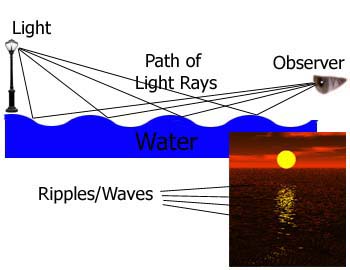|
|
|
|

The
Terzan 5 "galactic fossil" star cluster.
Image credit: F. Ferraro / NASA / ESA
/ ESO.
|
Science
Over the Edge
A
Roundup of Strange Science for the Month
October
2016
|
|
In the
News:
 "Galactic
Fossil" Found - Scientists have found clump of stars
which is a "galactic fossil" that dates back 12 billion
years. According to a new study Terzan 5, which is 19,000
light-years from Earth, near the hub of our galaxy, is one
of its earliest structures. "In these fossils is written
the history of the formation of the first cosmic structure
at the time when the universe was a baby, just 1 billion
years old," said Francesco Ferraro, lead author and professor
in the physics and astronomy department at the University
of Bologna in Italy. What makes Terzan 5 unique from other
such objects is that it is composed of a bunch of stars
born 12 billion years ago and then another burst again 4.5
billion years ago. Scientists believe it was the site of
a supernovae explosion after the first gush of star formation.
Because of Terzan 5 was so massive it retained much of the
gas from that explosion, which fueled the second burst of
star formation 7 billion years later. Ferraro believes because
this living fossil was less massive and more compact than
the other such clumps so it didn't merge with the central
galactic of the bulge. Scientists hope that by study this
fossil they may gain clues to the formation of the galaxy. "Galactic
Fossil" Found - Scientists have found clump of stars
which is a "galactic fossil" that dates back 12 billion
years. According to a new study Terzan 5, which is 19,000
light-years from Earth, near the hub of our galaxy, is one
of its earliest structures. "In these fossils is written
the history of the formation of the first cosmic structure
at the time when the universe was a baby, just 1 billion
years old," said Francesco Ferraro, lead author and professor
in the physics and astronomy department at the University
of Bologna in Italy. What makes Terzan 5 unique from other
such objects is that it is composed of a bunch of stars
born 12 billion years ago and then another burst again 4.5
billion years ago. Scientists believe it was the site of
a supernovae explosion after the first gush of star formation.
Because of Terzan 5 was so massive it retained much of the
gas from that explosion, which fueled the second burst of
star formation 7 billion years later. Ferraro believes because
this living fossil was less massive and more compact than
the other such clumps so it didn't merge with the central
galactic of the bulge. Scientists hope that by study this
fossil they may gain clues to the formation of the galaxy.
 Great
Plague Killer Identified - DNA from a newly discovered
graveyard has identified the disease that the caused the
Great Plague of London in 1665. Examination of the DNA confirmed
that it was the Bubonic Plague. Though long suspected as
the culprit, there was no definite proof of it until now.
The plague, which killed 60% of people if left untreated,
is caused by bacteria carried by fleas found on small animals,
such as rats, which can bite humans and spread the germs.
The burial site, uncovered in 2014, contained 3,300 bodies.
The plague killed 8,000 per week at its height. It is the
same bacteria that caused the "Black Death" of the 14th
century. To find the DNA necessary to determine the bacteria
involved, researchers from the Max Planck Institute in Jena,
Germany, extracted DNA from 20 skeletons found in the mass
burial pit, as well as 20 skeletons from other parts of
the burial ground for comparison. DNA was hard to find because
the environment, buried in the ground, is damaging to it.
Researchers had to extract it from the roots of the skeleton's
teeth. Great
Plague Killer Identified - DNA from a newly discovered
graveyard has identified the disease that the caused the
Great Plague of London in 1665. Examination of the DNA confirmed
that it was the Bubonic Plague. Though long suspected as
the culprit, there was no definite proof of it until now.
The plague, which killed 60% of people if left untreated,
is caused by bacteria carried by fleas found on small animals,
such as rats, which can bite humans and spread the germs.
The burial site, uncovered in 2014, contained 3,300 bodies.
The plague killed 8,000 per week at its height. It is the
same bacteria that caused the "Black Death" of the 14th
century. To find the DNA necessary to determine the bacteria
involved, researchers from the Max Planck Institute in Jena,
Germany, extracted DNA from 20 skeletons found in the mass
burial pit, as well as 20 skeletons from other parts of
the burial ground for comparison. DNA was hard to find because
the environment, buried in the ground, is damaging to it.
Researchers had to extract it from the roots of the skeleton's
teeth.
 New
Lightning Records - Experts at the World Meteorological
Organization (WMO) have updated their extreme weather events
list to include a lightning bolt almost 200 miles long and
another that lasted a record 7.74 seconds. The longest recorded
lightning bolt occurred over Oklahoma in 2007 and had a
length of 199.4 miles (321 km). The longest duration lightning
bolt struck over Provence-Alps Côte d'Azur, France in 2012
and lasted nearly 8 seconds. The announcement allowed Randy
Cerveny, the WMO's chief rapporteur of climate and weather
extremes, to warn "The end result reinforces critical safety
information regarding lightning, specifically that lightning
flashes can travel huge distances from their parent thunderstorms."
Experts say it is possible to be struck by lightning even
though the storm has appeared to have passed through your
area. It is estimated that lightning flashes 30 times a
second somewhere on the earth with a total of about 1.2
million strikes a year. New
Lightning Records - Experts at the World Meteorological
Organization (WMO) have updated their extreme weather events
list to include a lightning bolt almost 200 miles long and
another that lasted a record 7.74 seconds. The longest recorded
lightning bolt occurred over Oklahoma in 2007 and had a
length of 199.4 miles (321 km). The longest duration lightning
bolt struck over Provence-Alps Côte d'Azur, France in 2012
and lasted nearly 8 seconds. The announcement allowed Randy
Cerveny, the WMO's chief rapporteur of climate and weather
extremes, to warn "The end result reinforces critical safety
information regarding lightning, specifically that lightning
flashes can travel huge distances from their parent thunderstorms."
Experts say it is possible to be struck by lightning even
though the storm has appeared to have passed through your
area. It is estimated that lightning flashes 30 times a
second somewhere on the earth with a total of about 1.2
million strikes a year.
 Lost
Artic Expedition Ship Found - The HMS Terror, part of
an Artic expedition that disappeared nearly 170 years ago
has been found at the bottom of a bay off the coast of King
William Island in the Canadian Arctic Archipelago. The Terror
and another ship, the HMS Erebus, disappeared while searching
for a Northwest Passage to Asia. Researchers from the Arctic
Research Foundation in partnership with Parks Canada found
the remains of the ship by in 80 feet of water by using
a small, remotely operated vehicle (ROV). "We have successfully
entered the mess hall, worked our way into a few cabins
and found the food storage room with plates and one can
on the shelves," Adrian Schimnowski, the foundation's operations
director, told the newspaper, The Guardian. "We spotted
two wine bottles, tables and empty shelving. Found a desk
with open drawers with something in the back corner of the
drawer," he continued. The Erebus and Terror sailed from
England on May 19, 1845 with a crew of 129 men and became
fatally trapped in sea ice. The crew attempted to walk to
safety, but it is believed that none survived. Lost
Artic Expedition Ship Found - The HMS Terror, part of
an Artic expedition that disappeared nearly 170 years ago
has been found at the bottom of a bay off the coast of King
William Island in the Canadian Arctic Archipelago. The Terror
and another ship, the HMS Erebus, disappeared while searching
for a Northwest Passage to Asia. Researchers from the Arctic
Research Foundation in partnership with Parks Canada found
the remains of the ship by in 80 feet of water by using
a small, remotely operated vehicle (ROV). "We have successfully
entered the mess hall, worked our way into a few cabins
and found the food storage room with plates and one can
on the shelves," Adrian Schimnowski, the foundation's operations
director, told the newspaper, The Guardian. "We spotted
two wine bottles, tables and empty shelving. Found a desk
with open drawers with something in the back corner of the
drawer," he continued. The Erebus and Terror sailed from
England on May 19, 1845 with a crew of 129 men and became
fatally trapped in sea ice. The crew attempted to walk to
safety, but it is believed that none survived.
 Quakes
Might Help Sustain Life on Mars - A new study suggests
that life on Mars could be fueled by marsquakes. Scientists
have wondered if there is microbial life on Mars what would
it eat? Bacteria deep inside the earth munch on hydrogen
released when earthquakes cause rocks with silicon to grind
together with water. They believe the same mechanism could
be at work on Mars. While Mars has less quakes than Earth
due to a lack of volcanism and plate tectonics, researchers
still think there is enough activity to release 11 tons
of hydrogen per year on the red planet. While not much,
it may be enough to sustain sporatic pockets of microbial
activity underground. "This hydrogen can probably support
only small amounts of biomass," said the study's lead author,
Sean McMahon, a geomicrobiologist at Yale University. "Still,
this fits into the growing picture of the kind of biosphere
that Mars might be capable of sustaining. If you look at
bacteria and other microorganisms on Earth, you find ones
capable of resting in a dormant state for extremely long
periods of time, and they can wake up and reproduce and
then go back to sleep again for another 10,000 years or
so." Quakes
Might Help Sustain Life on Mars - A new study suggests
that life on Mars could be fueled by marsquakes. Scientists
have wondered if there is microbial life on Mars what would
it eat? Bacteria deep inside the earth munch on hydrogen
released when earthquakes cause rocks with silicon to grind
together with water. They believe the same mechanism could
be at work on Mars. While Mars has less quakes than Earth
due to a lack of volcanism and plate tectonics, researchers
still think there is enough activity to release 11 tons
of hydrogen per year on the red planet. While not much,
it may be enough to sustain sporatic pockets of microbial
activity underground. "This hydrogen can probably support
only small amounts of biomass," said the study's lead author,
Sean McMahon, a geomicrobiologist at Yale University. "Still,
this fits into the growing picture of the kind of biosphere
that Mars might be capable of sustaining. If you look at
bacteria and other microorganisms on Earth, you find ones
capable of resting in a dormant state for extremely long
periods of time, and they can wake up and reproduce and
then go back to sleep again for another 10,000 years or
so."
|
|
 Science
Quote of the Month - "It
is strange that only extraordinary men make the discoveries,
which later appear so easy and simple. " -
Georg C. Lichtenberg Science
Quote of the Month - "It
is strange that only extraordinary men make the discoveries,
which later appear so easy and simple. " -
Georg C. Lichtenberg
|
|
What's
New at the Museum:
 H.P.
Lovecraft's World of Horror
- His stories have influenced much of modern horror,
yet he died in poverty, a figure unknown but to a very few.
Who was this author whose terrifying, tentacled monsters
have inspired popular culture from Hell Boy to Pirates
of the Caribbean? Who was H.P. Lovecraft? - Full
Story
H.P.
Lovecraft's World of Horror
- His stories have influenced much of modern horror,
yet he died in poverty, a figure unknown but to a very few.
Who was this author whose terrifying, tentacled monsters
have inspired popular culture from Hell Boy to Pirates
of the Caribbean? Who was H.P. Lovecraft? - Full
Story
 Mysterious
Picture of the Month - What
is this this? Mysterious
Picture of the Month - What
is this this?

|
|
Ask
the Curator:
 Elongated
Night Reflections - If you look at the reflection
of a street light from across a body of water, it appears
long in one direction but not the other? Why? - Tariq Elongated
Night Reflections - If you look at the reflection
of a street light from across a body of water, it appears
long in one direction but not the other? Why? - Tariq
Water,
under the right conditions, reflects light just like mirror.
Of course, a mirror is a usually composed of solid material
(most commonly glass with a silver backing) and water is
liquid. As long as the water is perfectly still and flat
the image reflected is almost mirror-like, but should a
breeze start to ripple the water, strange things start to
happen.
The
ripples cause the shape of the surface of the water to change
into a series of up and down curves. This means that the
light normal reflected by the surface doesn't come straight
to the viewer, but is distorted much like in a fun house
mirror. While fun house mirrors are usually static - either
making you look tall and thin or short and fat - the many
ripples in the water are always moving and changing giving
the reflected image a vibrating quality.
 Because
a lake might have thousand of ripples between the viewer
and a distant object on the other side of the lake each
ripple as it moves is capable of picking a tiny bit of the
light coming from the object and reflecting it back to the
viewer (see diagram) making it look like the object is in
thousands of different locations. Because
a lake might have thousand of ripples between the viewer
and a distant object on the other side of the lake each
ripple as it moves is capable of picking a tiny bit of the
light coming from the object and reflecting it back to the
viewer (see diagram) making it look like the object is in
thousands of different locations.
During
the day when everything is evenly lighted these bits of
light are overwhelmed by all the other reflections involved
and only contribute to the overall reflected image by making
it look fuzzy. At night, however, when the most of the background
is dark, all these tiny reflection become visible. They
tend to appear to elongate the lighted object in the direction
where the ripples appear spaced closely together from the
viewer's perspective. That is vertically as you have observed.
It is possible to see some spreading horizontally, however,
depending on what direction the wind is blowing the ripples.
Have
a question? Click here to
send it to us.
|
| In
History:
 Model
T Car - On October 1st, 1908, the Ford Model T car
was introduced to the public. The Model T was the first
vehicle to be built on a production line which greatly lowered
the cost for a car. At the start a copy cost $825 but because
of increased production by 1925, a coupe sold for only $525.
For a long time it was the best selling car in the United
States. Model
T Car - On October 1st, 1908, the Ford Model T car
was introduced to the public. The Model T was the first
vehicle to be built on a production line which greatly lowered
the cost for a car. At the start a copy cost $825 but because
of increased production by 1925, a coupe sold for only $525.
For a long time it was the best selling car in the United
States.
|
|
In
the Sky:
 Orionid Meteor Shower - October brings the Orionid meteor
shower which is visible as early as the 2nd and as late
as November 7th. The peak of the shower will on the night
of October 20th and early on the morning of October 21st.
The Orionid meteor shower is created by debris from Comet
Halley. Look for them radiating from the constellation Orion.
Orionid Meteor Shower - October brings the Orionid meteor
shower which is visible as early as the 2nd and as late
as November 7th. The peak of the shower will on the night
of October 20th and early on the morning of October 21st.
The Orionid meteor shower is created by debris from Comet
Halley. Look for them radiating from the constellation Orion.
|
|
Observed:
 New Photo of Nessie - A whiskey warehouse worker named
Ian Bremner snapped a picture of something he saw in the
water of Loch Ness that looks a lot like a serpent-like
creature. "This is the first time I've ever seen Nessie
in the loch. I would be amazing if I was the first one to
find her," said 58 year-old Bremner. Bremner, who was out
looking to photograph some red deer, told the newspaper
The Scottman, he has always been a Nessie skeptic. He shot
the photograph on September 10th, somewhere between the
villages of Dores and Inverfarigaig in Scotland.
To see the picture
click the link: http://img.huffingtonpost.com/asset/2000_1000/57dc0f1a1800006c32bd1e31.jpeg?cache=qvmqa4lvth
New Photo of Nessie - A whiskey warehouse worker named
Ian Bremner snapped a picture of something he saw in the
water of Loch Ness that looks a lot like a serpent-like
creature. "This is the first time I've ever seen Nessie
in the loch. I would be amazing if I was the first one to
find her," said 58 year-old Bremner. Bremner, who was out
looking to photograph some red deer, told the newspaper
The Scottman, he has always been a Nessie skeptic. He shot
the photograph on September 10th, somewhere between the
villages of Dores and Inverfarigaig in Scotland.
To see the picture
click the link: http://img.huffingtonpost.com/asset/2000_1000/57dc0f1a1800006c32bd1e31.jpeg?cache=qvmqa4lvth
|
|
LGM:

Zeep
and Meep are on a well deserved vacation. In their place
we feature highlights from their past adventures.
LGM
Archive 1998, 1999, 2000, 2001, 2002, 2003, 2004, 2005, 2006, 2007,
2008, 2009,
2010, 2011,
2012,
2013,
2014

Copyright Lee Krystek 2016. All Rights Reserved.
|
|
|
|





 Because
a lake might have thousand of ripples between the viewer
and a distant object on the other side of the lake each
ripple as it moves is capable of picking a tiny bit of the
light coming from the object and reflecting it back to the
viewer (see diagram) making it look like the object is in
thousands of different locations.
Because
a lake might have thousand of ripples between the viewer
and a distant object on the other side of the lake each
ripple as it moves is capable of picking a tiny bit of the
light coming from the object and reflecting it back to the
viewer (see diagram) making it look like the object is in
thousands of different locations. 